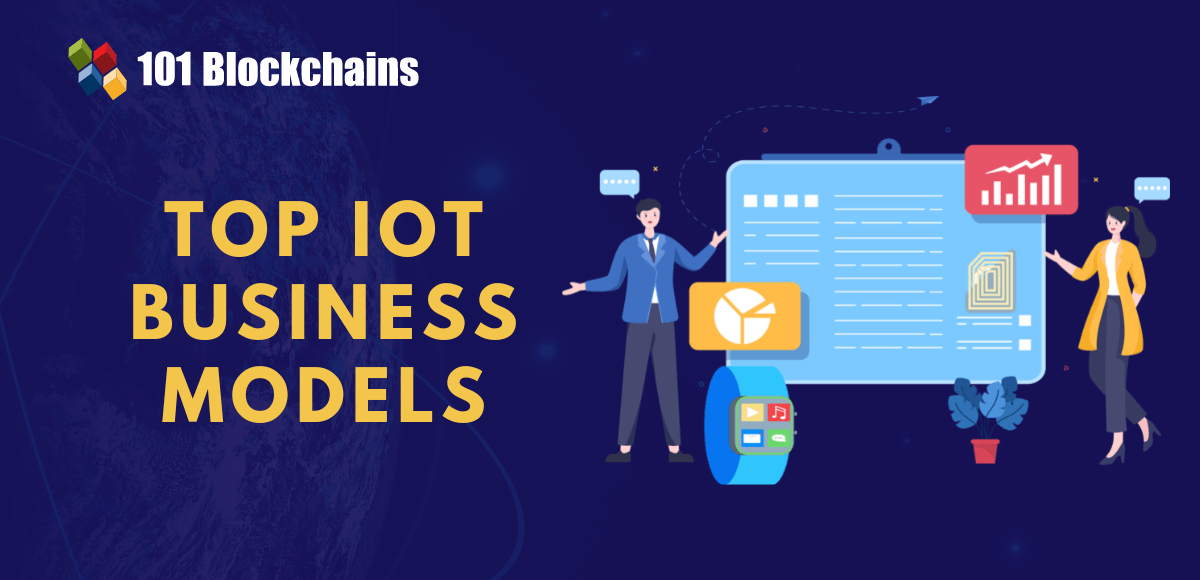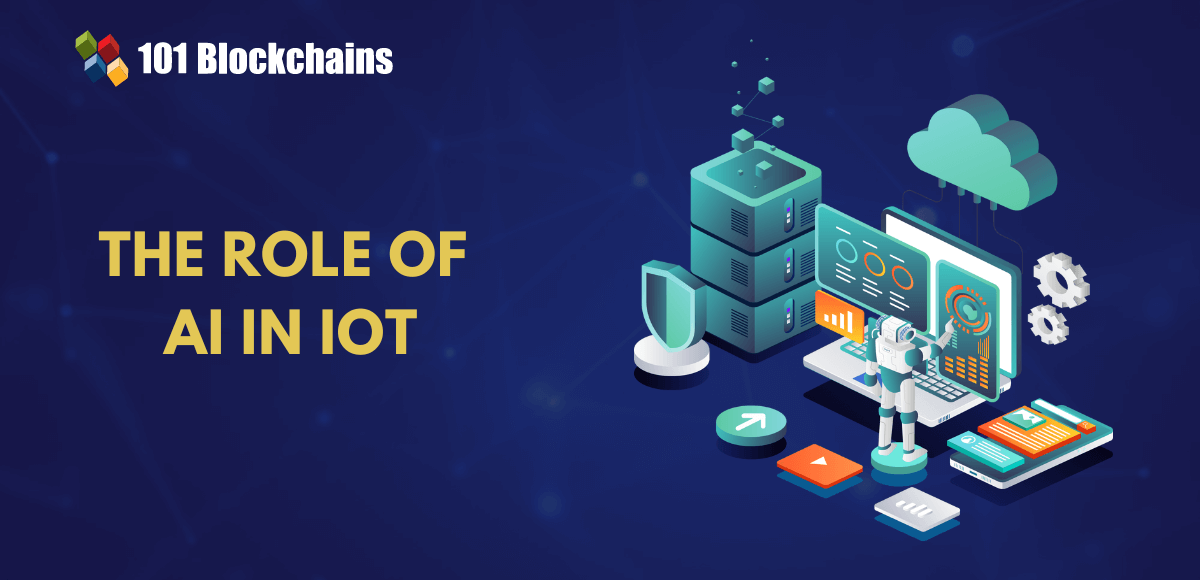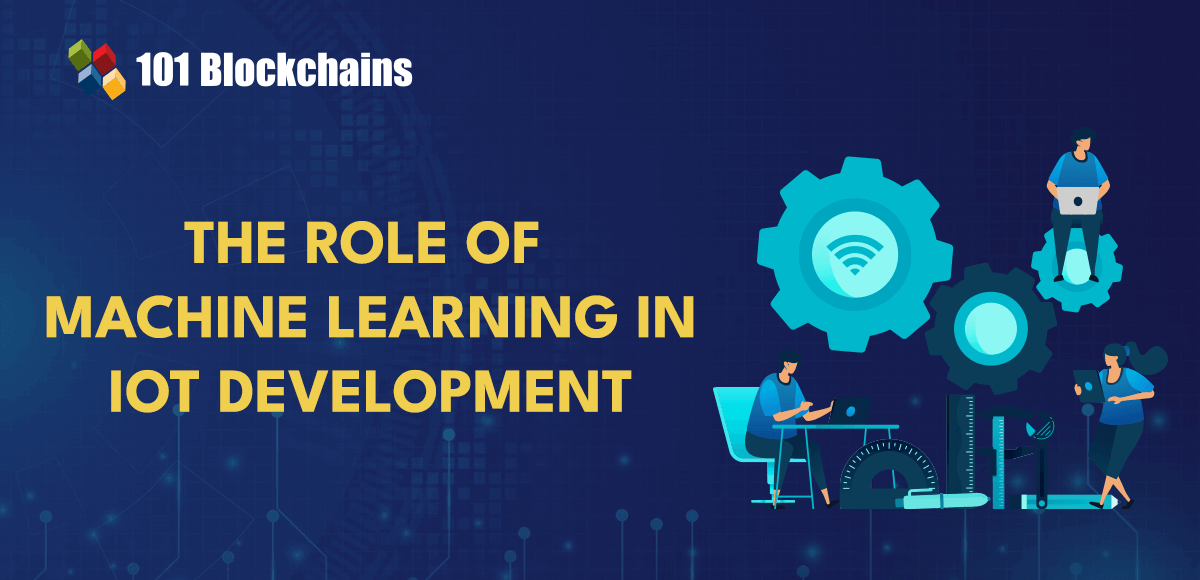Learn how blockchain truly works, master key definitions, and uncover what makes smart contracts so "smart." Dive into the fundamentals, gain valuable insights, and start your blockchain journey today!
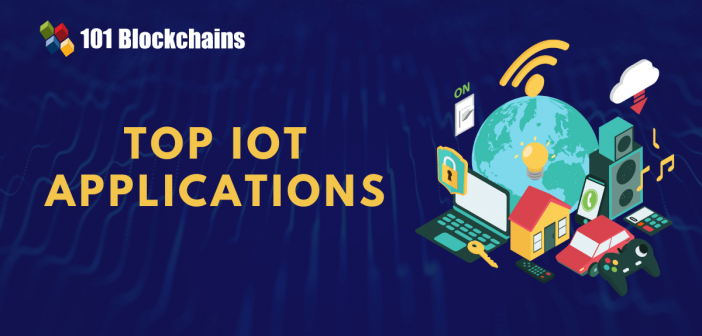
- IoT
James Howell
- on January 17, 2025
Top 10 IoT Applications In 2025
The number of connected IoT devices continues to grow at an exponential rate, explaining the rapid expansion of IoT. As of now, more than 15 billion active IoT device connections prove the dominance of Internet of Things over the world. Some of the top IoT applications in healthcare and supply chain management have established strong foundations for IoT adoption.
The global IoT market could achieve a total capitalization of around $1.1 trillion in 2023, with substantial growth in spending. Which sectors are using the continuously growing volume of funds in global IoT spending estimates? Some of the prominent use cases of IoT include remote asset monitoring and control, process automation, location tracking, asset performance optimization and vehicle fleet management.
Market research reports have pointed out that the revenue for global IoT market could be almost $293.2 billion in 2023. The number of IoT-connected devices could surpass the 16 billion mark in 2023. Therefore, it is important to know about the applications of IoT which will take the limelight in 2025. The overview of popular IoT use cases can help in understanding the different factors which encourage IoT adoption. Let us learn more about different notable applications of Internet of Things in various sectors and their value advantages in the following post.
Most Popular Applications of Internet of Things
Internet of Things or IoT provides an effective technological solution for enabling integration between the real world and computer systems. The basic trait of an IoT application extends beyond connectivity as it also helps in ensuring access to data, which facilitates communication between the connected devices and with users. For example, you can use IoT data to understand how a specific device in the network has been performing or obtain details about its battery consumption.
With the help of IoT, every device connected to the internet could collect, monitor and exchange data on its own. Imagine the improvements in traditional operations through devices that could detect anomalies in production processes and report accurate data to decision-makers. Here are some of the most significant real-world applications of Internet of Things you should watch out for in 2025.
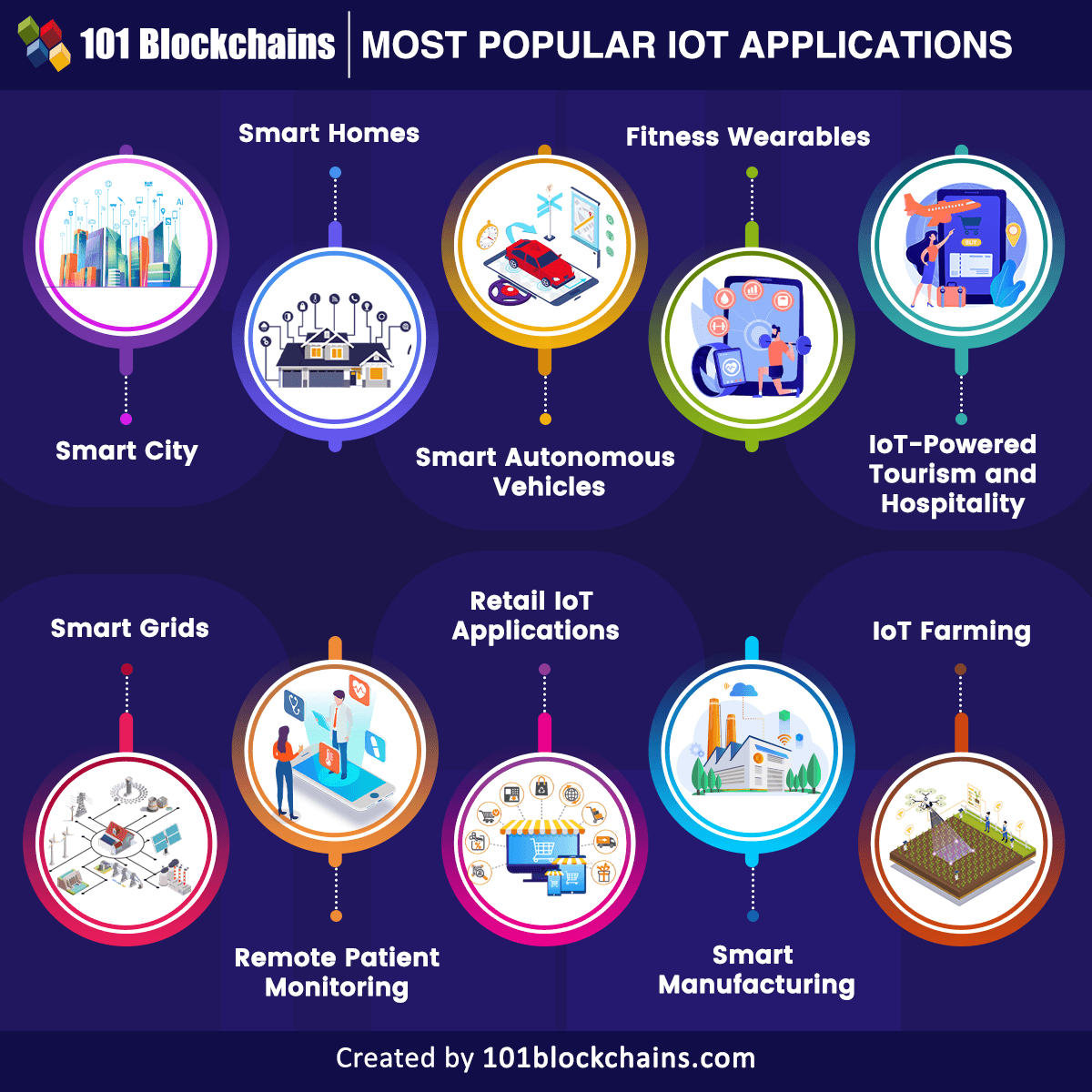
Please include attribution to 101blockchains.com with this graphic. <a href='https://101blockchains.com/blockchain-infographics/'> <img src='https://101blockchains.com/wp-content/uploads/2023/03/Most-Popular-IoT-Applications.png' alt='Most popular iot applications='0' /> </a>
1. Smart City
Smart City is an interesting example of real-world IoT applications which can create the cities of the future. It is a revolutionary concept for application of IoT in improvement of urban infrastructure. The use of IoT-based systems can improve efficient access to utilities, quality and cost of living alongside use of available resources. Smart cities also present viable prospects for achieving plausible improvements in economic growth alongside driving environmental sustainability.
The basic premise of ‘smart city’ concept revolves around enhancements in urban planning and public administration by leveraging service automation. Smart cities could help in improving different aspects such as governance services, energy distribution and innovative urban agriculture. The benefits of smart cities can also introduce viable improvements in waste management, transport and traffic management alongside access to utilities such as water and healthcare.
Expand your knowledge of IoT with comprehensive IoT Flashcards explaining terms and technologies,
2. Smart Homes
If the cities can become “smart” with IoT, why shouldn’t you think the same for homes in the smart cities? The popular applications in IoT also focus on creation of smart homes, which aim at improving the quality of living. Smart homes involve the use of IoT for controlling different home appliances, alarms, water flow and lights. On top of it, the ‘smart home’ concept also focuses on improving safety for your homes through comprehensive IoT-based smart security systems.
The foremost advantage of smart homes is the flexibility of managing all processes in a home through smartphones, laptops and tablets. Did you forget to switch off the lifts before leaving for work? The applications of IoT could help you switch off the lights at your home from an app on your smartphone. Most important of all, the facility of timely alerts regarding functioning of different appliances in your home can help in avoiding costly repairs. At the same time, the benefit of smart security systems can safeguard your home against different threats.
3. Smart Autonomous Vehicles
The concept of self-driving cars seemed like a theme from science-fiction novels or movies before the arrival of IoT. Smart autonomous vehicles are a top answer to “What are the future application of IoT technology?” as they could revolutionize the experience of vehicle users. As of now, connected devices in cars could help in controlling specific functionalities. For example, GPS technology in vehicles can help in navigating to desired locations and smart devices could help in determining the optimal route to the destination.
The uses of IoT in smart vehicles also include the installation of sensors in the car for monitoring radiator water temperature or engine oil levels. Vehicle owners can also monitor the overall state of the car, including fuel levels, location and other details, through an app on their smartphones or laptops.
Want to learn how you can use blockchain in the Internet of Things (IoT)? Enroll now in the Getting Started with Blockchain And IoT Course
4. Fitness Wearables
The next prominent entry among the popular applications of Internet of Things in 2025 would point to fitness wearables. IoT-based fitness trackers could help in optimizing fitness goals alongside tracking your progress in achieving the goals. The list of top IoT applications in fitness tracking involves a broad range of wearables that can help in monitoring daily activities. You can measure anything from sleeping patterns to glucose levels in your body with the help of fitness wearables.
The most common and popular application of Internet of Things in fitness tracking involves the measurement of workout statistics and amount of calories you burn. The applications of IoT for fitness tracking also emphasize the flexibility of using wearables and monitoring your health. For example, you don’t have to attach multiple wires to your body to measure your heart rate regularly. Internet of Things can help you measure your heart rate throughout the day with a smartwatch.
5. IoT-Powered Tourism and Hospitality
The diversity of uses of IoT in different industries offers promising scope for the possibilities of using IoT in hospitality. Internet of Things presents sizeable potential for optimizing operations in the hospitality and tourism industry. The most prominent IoT application in hospitality focuses on optimizing staff allocation. Staff management accounts for a massive cost burden on the operations of hotels, motels and resorts in tourism and hospitality. IoT can facilitate automation of specific tasks, which can reduce the burden on hotel staff.
Mobile electronic keys are one example of the utilization of IoT in hospitality and tourism sector. The keys can help hotel guests in accessing their rooms in the hotel without interacting with any staff member. In addition, IoT applications could also help guests in requesting room service or share feedback directly from their smartphones. As a result, hotel management could obtain useful information about guest behavior and requirements with the help of IoT.
Curious to know how the IoT business mechanisms work? Enroll Now in the Internet Of Things Business Impact Course
6. Smart Grids
Internet of Things helps introduce the ‘smart’ into conventional systems. Smart grids leverage the capabilities of IoT for innovative transformation of the energy distribution infrastructure. Energy utility companies are leveraging applications in IoT to create smart grids that could provide better energy efficiency.
Smart grids can provide comprehensive functionalities for monitoring energy consumption alongside generating predictions for power outages and energy shortages. Furthermore, smart grids also help in collecting data regarding the utilization of energy by different companies and individuals. At the individual level, each home can use insights from smart grid to evaluate energy usage and identify better ways to save energy.
7. Remote Patient Monitoring
The most useful real-world application of Internet of Things is IoT-enabled Remote Patient Monitoring or RPM systems. Questions such as “What are the future application of IoT technology?” draw attention to the ways in which IoT introduces value benefits that would stand the test of time.
The effectiveness of IoT technology in improving remote patient monitoring systems has introduced large-scale improvements in the domain of healthcare. As a matter of fact, a global pandemic taught the importance of improved modernization and flexible accessibility in healthcare services. How can patients avail of healthcare benefits without visiting their doctors?
Internet of Things provides a viable answer with the use of sensors for monitoring the health status of patients. IoT sensors can help doctors in monitoring and track the progress of patients in accordance with recommended treatment plans. Doctors can use a simple IoT application on their smartphones to check the vital stats of patients. In addition, remote patient monitoring can also help in finding out whether patients are taking their medications on time. The applications of remote patient monitoring can also ensure that patients receive timely medical assistance in the event of emergencies.
Learn the latest insights about the IoT (Internet of Things) and understand how it’s related to the blockchain with industry experts with IoT Skill Path
8. Retail IoT Applications
The retail sector also leverages IoT to achieve better efficiencies alongside driving new approaches for innovation. Retail IoT could help in ensuring improvements in customer experience alongside accuracy in product tracking. The top IoT applications in retail sector can also support improvements in staff strategy alongside inventory management. On top of it, retailers could also leverage IoT to monitor customer shopping patterns.
IoT data can help retailers in collecting information about purchase history, location information and trends in purchasing behavior. As a result, retailers can obtain real-time insights into customers, thereby creating better strategies for achieving their business objectives.
9. Smart Manufacturing
Industrial IoT has emerged as one of the formidable branches of applications of Internet of Things. The most noticeable impact of Industrial Internet of Things has been identified in the manufacturing sector. One of the most significant applications in IoT for manufacturing points at examples of smart factories, which use IoT technology.
Smart factories can utilize Internet of Things technology for collecting data on different industrial devices and processes. Based on the insights from industrial processes and devices, manufacturers could come up with strategic plans alongside improving efficiencies.
The applications of Internet of Things in manufacturing involve integration of IoT sensors with manufacturing equipment and other factory assets. The biggest benefit of smart manufacturing is predictive maintenance which helps in avoiding costly repairs. On top of it, IoT applications in smart manufacturing can also support effective use of analytics for optimizing energy consumption. At the same time, IoT can also offer the functionalities of asset tracking that could play a crucial role in enhancing productivity of supply chain processes.
10. IoT Farming
The final addition to the list of Internet of Things applications would refer to the promising use cases of IoT in farming. Smart IoT farming apps could help in optimization of different farm operations, which consume time and effort. The intelligent Internet of Things applications has created revolutionary advancements in the domain of farming. For example, an IoT application could help farmers determine the best time for harvesting crops. IoT sensors can help farmers in predicting changes in the weather alongside detecting variations in soil moisture and concentration of nutrients.
Smart farming through IoT also involves the use of sensors for monitoring security of farms. In addition, smart tags for livestock can help farmers with advantages of real-time monitoring of health information of the animals. Other potential examples of IoT use cases in farming point to autonomous farming equipment.
Want to familiarize yourself with the technology stack associated with IoT? Enroll now in Internet Of Things (IoT) – Intermediate Level Course!
Examples of IoT Applications in the Real World
The overview of different applications of Internet of Things in the real world proves how IoT can improve various industries. Interestingly, the examples of applications of Internet of Things could offer a better understanding of the value of IoT. Some of the popular examples of Internet of Things applications include,
DHL, the global logistics service provider, has utilized IoT sensors for monitoring location, temperature and humidity of shipments.
John Deere, the renowned agricultural equipment manufacturer, has used IoT for integrating satellite-connected guidance and tracking sensors in tractors and other farming equipment. The IoT application initiatives by John Deere have set new benchmarks for precision farming, which can improve efficient use of farming resources.
GE Appliances has leveraged Internet of Things to revolutionize its manufacturing operations through optimization of supply chain. The company has used IoT to improve inventory management alongside increasing efficiency in the production workflows.
Samsung is a prominent brand for smart home appliances and televisions, which showcase the potential of IoT technology. The connected appliances of Samsung can be accessed easily through mobile devices, which facilitates better flexibility for managing the appliances.
Walmart also shows one of the top IoT applications in the retail sector with the use of RFID technology. The retail giant uses RFID technology for real-time inventory tracking, thereby improving access to accurate insights on product movement through the supply chain.
Want to become IoT expert, Checkout Step By Step Guide To Become An IoT Expert
Conclusion
The top applications of Internet of Things and the most popular examples of IoT use in different industries prove that IoT has disruptive potential. One of the biggest advantages of IoT is the facility to make devices communicate with each other. The emerging applications in IoT landscape would shape a new ecosystem of IoT protocols, devices and networks.
Therefore, it is reasonable to expect the possibilities of new business models and career opportunities in the field of IoT. Awareness regarding the popular applications of Internet of Things offers more than just an introduction to IoT. You can learn about the diversity in the use cases of IoT and the scale of innovation in implementing IoT across different industries. Learn more about IoT fundamentals and how it can work with other technologies in the future.




